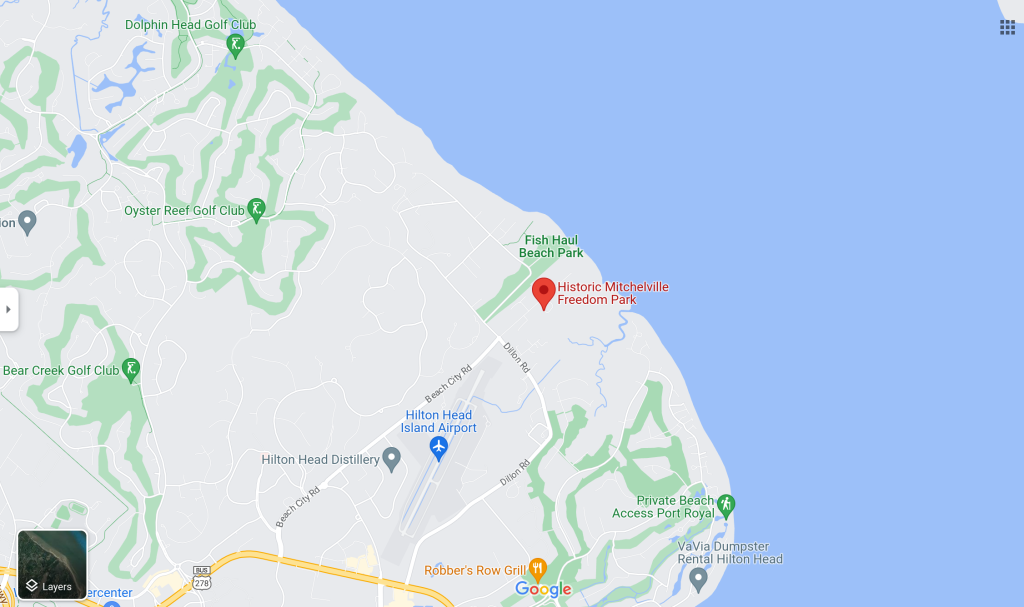Historic Mitchelville Freedom Park
40 Harriet Tubman Way Hilton Head Island, SC 29928
History of Historic Mitchelville Freedom Park
On November 7, 1861, Union forces attacked two Confederate forts and the Sea Islands of South Carolina near Port Royal. “The Battle of Port Royal” later drove the Confederate forces to retreat to the mainland. One island, Hilton Head Island, immediately became the headquarters for the Union Army. It also would become the setting for the first self-governed town of freed Africans in the country. After the Battle of Port Royal, men, women, and children fled the plantations and sought freedom with the Union army. However, the Emancipation Proclamation was yet to be signed so these former slaves—though seeking new lives as freedmen–would be labeled “contrabands of war” and housed in ill-constructed shacks on the grounds of the Union outpost. In need of labor, the Union Army hired these “contrabands”, as carpenters, blacksmiths, launderers, coopers, clerks, and cooks.
Due to overcrowding in the barracks in the Union camp, General Ormsby Mitchel dedicated a large parcel of the land, near the old Drayton Plantation, to the newly freed Blacks that they would be able to cultivate and govern. Individuals and families were given a quarter acre lot and material to build a home. The freedmen elected their own officials, created their own system of law, built three churches, four stores and established the first compulsory school system in the state of South Carolina. Education was required for every child from age 6 to 15 and when the school district was created in 1866, there were 238 students in the town. Commercial organizations and churches were established and weddings were conducted. Men were recruited for the on-going Civil War and Black soldiers built nearby Fort Howell to protect Mitchelville. On weekends, the marsh tacky workhorses were raced along the beaches for enjoyment. They designed sweetgrass baskets and fishing nets and sang songs interpreting their burden
After the slaves were freed by the Emancipation Proclamation, Mitchelville (named after General Mitchel following his death from yellow fever in 1862) became a template for the creation of future freedmen towns and served as the “rehearsal for Reconstruction” This experiment of independence was a radical idea. It addressed the former slaves’ longings for their own land, the right to choose who would represent them, the responsibility of keeping families intact, the right to negotiate wages for their labor and to initiate their own religious and commercial enterprises.
At its height, Mitchelville boasted over 3,000 residents, but after the Union army left the area in 1868, the population began to decrease. Many residents began farming and engaging in local commerce to sustain themselves and the town would maintain until the end of the century. Eventually, the residents took apart their homes and moved inland towards the area of Squire Pope, Bayard and Chaplain. Even though the citizens of this important community moved on from the physical property, their connection to the town endures through their descendants and the impact of the first taste of African American independence. Mitchelville truly is: “Where Freedom Began”
Events at this location
No Events

